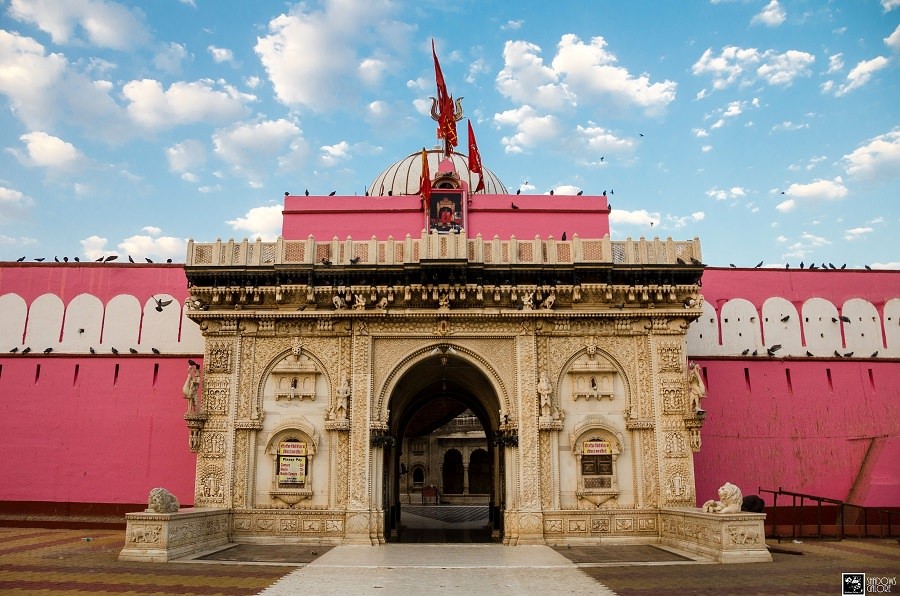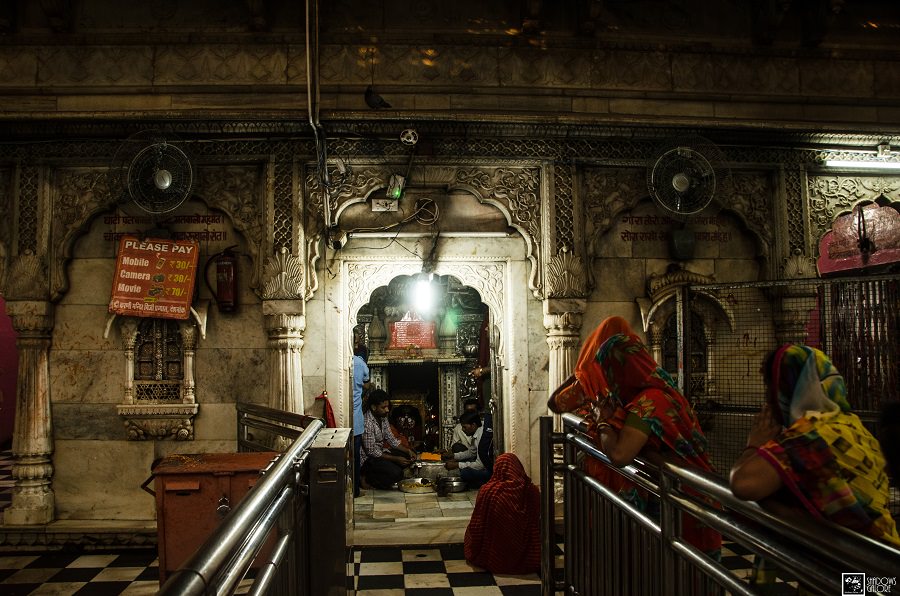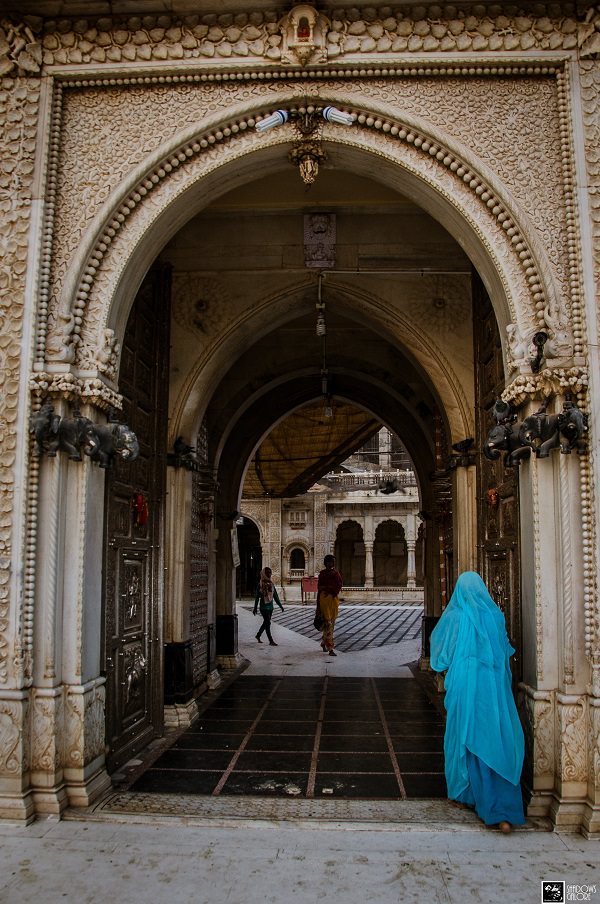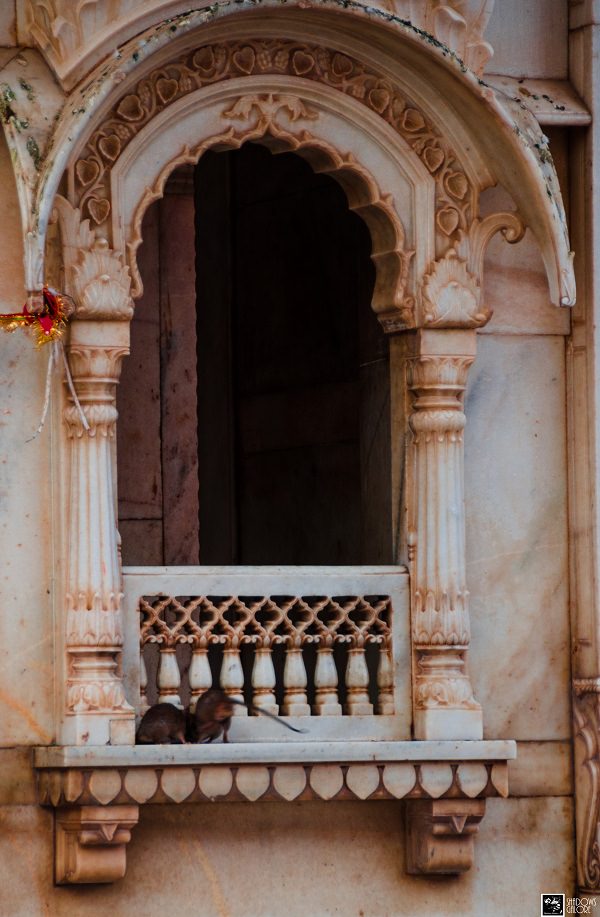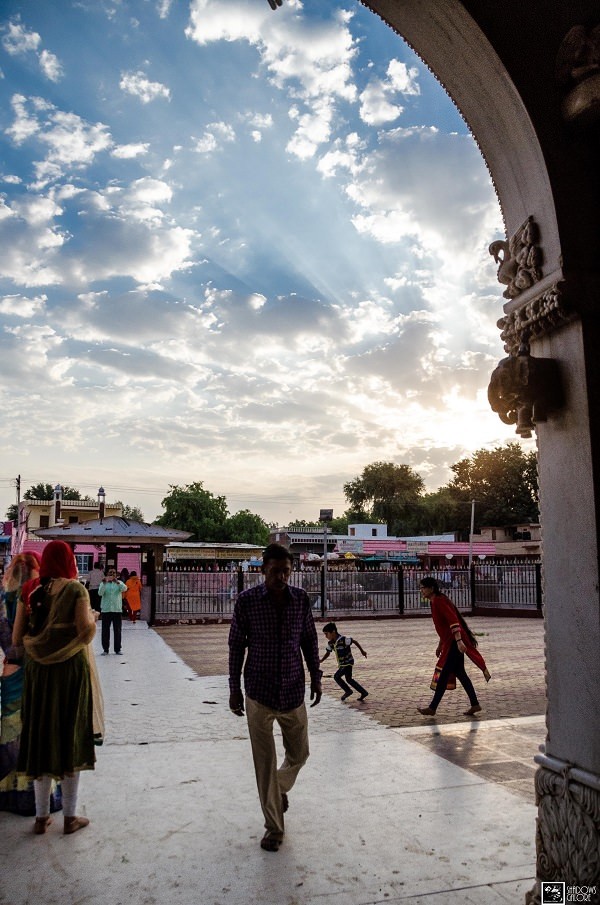One of the first things that we did in Bikaner was to pay an early morning visit to the Karni Mata Temple (also famous as The Rat Temple) at Deshnok. Even though it was not a part of the itinerary, folks at Narendra Bhawan were kind enough to arrange a trip for just two of us, Parnashree and me, while Abhinav donned the role of a guide.
Deshnok (or Deshnoke) is about 30 KM from Bikaner. The road passes through the desert and is so straight for most of the time, and with so little traffic, that one can easily go on an autopilot. The morning air was fresh, with just the right amount of chill and reaching the temple was a breeze.
The Legend of Karni Mata and the Kabas
Karni Mata was a warrior-saint during the 14th and early 15th century who is widely referred in Rajasthan as an incarnation of Goddess Durga. She is the family deity of the Rathods in Jodhpur and Bikaner and held the privilege of laying the foundation stones of both the Mehrangarh Fort and the Junagadh Fort. It was Deshnok where she lived for most of her 151 years lifetime (!) and it is here that she is said to have mysteriously disappeared.
Famous for its rats, called “Kabas”, the Karni Mata Temple has received widespread media coverage in recent past. While there are many legends about the Kabas of the temple, most common perception is that the believers consider the rats as the incarnation of their ancestors, thus very holy. It is forbidden to kill a rat, and if one gets killed by mistake, one must offer a similar rat made of silver. The devotees offer sweets, fruits, cereals and milk to the Kabas which are then distributed to the visitors. The sighting of white rats is considered most auspicious as they are believed to be the incarnations of the sons of Karni Mata.
Going by the popular narrative, the Kabas are a curious lot. They usually do not disturb anyone and considered harmless. No one has seen newborn Kabas, most of them are of a typical size and do not seem to be a part of the usual life and death cycle. While I had no means to verify this story, I found it very fascinating nonetheless.
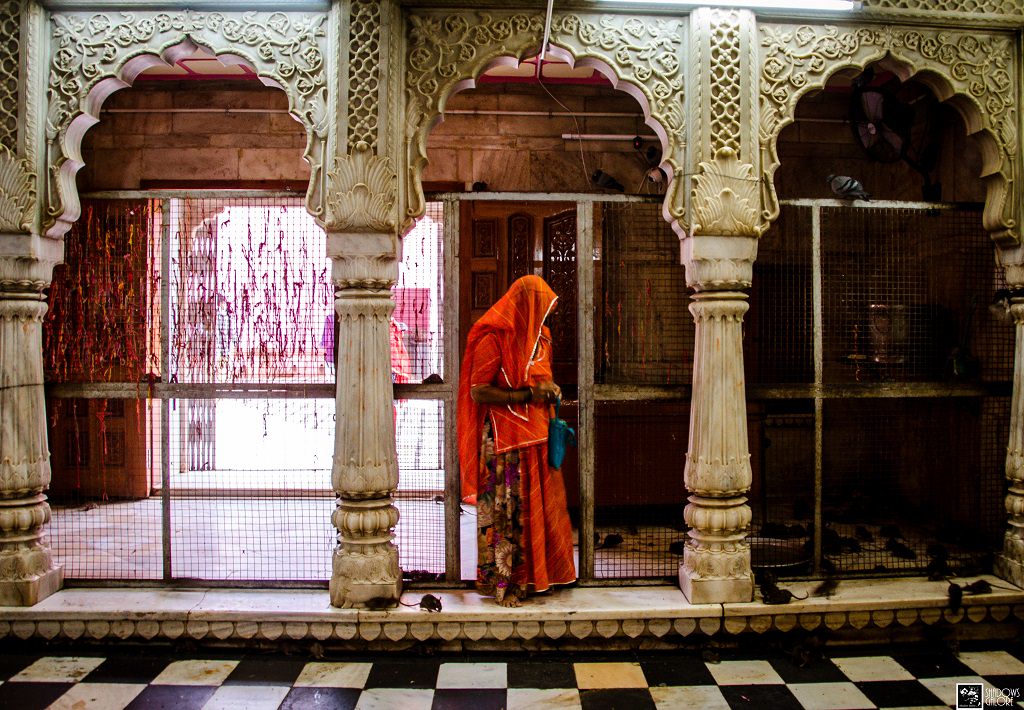
The Temple
The current temple was built by Maharaja Ganga Singh of Bikaner about 100 years ago. Made of marble and stone, with occasional gold, the temple is in a style called “Madh”. The main arched gateway is exquisitely carved in marble and opens to a courtyard leading to the inner shrine. The shrine is not well lit, however, it is not difficult to spot beautiful designs on its walls and ceilings, and rats all around!
There are large bowls of milk kept on the ground with the Kabas having a feast in a strangely orderly manner. They are everywhere, probably thousands of them! While the locals do not mind coming in contact with them, I was very ill at ease, probably due to my discomfort around all sorts of animals. Stayed just long enough to take some photographs, which did not come up well due to a lack of focus, and the hurried outside.
This is my absolute favourite photograph from the trip, taken by Parnashree of My Travel Diary. It captured the essence of Karni Mata Temple perfectly, how I wish I was the one to take it!
We stayed at the temple for about 30 minutes, mostly taking in this new cultural experience and capturing the surroundings in our cameras. It was a different experience, seeing yet another aspect of India, which can seem strange to outsiders, but very normal to people here. Quirks like this make India the incredible ocean of humanity it is, who are we to judge?
The crowds increased by 8 am and we made our exit just before the tourist buses started arriving. Our stomachs were grumbling with hunger and it was time to catch the breakfast and start the explorations of the day…
Adding some more photographs of the temple, while they have not come up that great, they can still tell a story or two about this fascinating temple of rats.

